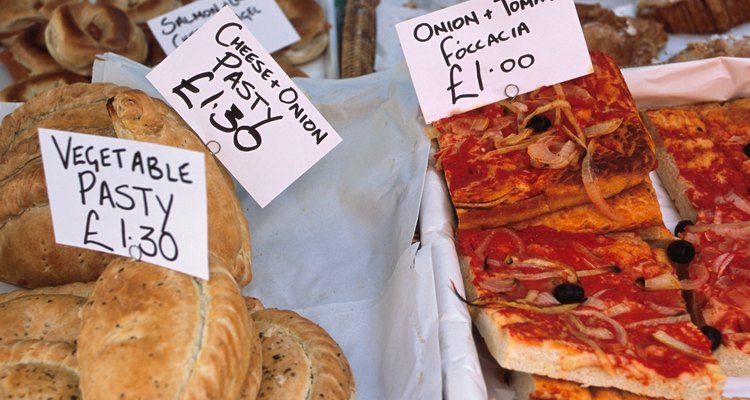
Hemera Technologies/Photos.com/Getty Images
Meat pies come in all different shapes and sizes, from the vast deep-dish pies sold at big box outlet stores to street-side vendors' tiny empanadas. Cornish pasties are an especially storied example of the meat pie, a large and hearty meal for Cornwall's hardworking coal and tin miners. They remain a durable lunch item, ideal to make and freeze in large quantities for quick meals at home or away.
A Basic Pasty Primer
The earliest pasties were made in stiff "coffins" of hard dough, which weren't intended to be eaten. Gradually bakers learned to make edible crusts that were still sturdy enough to carry around. By the Victorian era, the modern pasty -- with its filling of meat, potatoes, onions and root vegetables -- was well established. Its distinctive characteristic is a thickly rolled and crimped edge of pastry, which served two purposes. First, of course, is that it held steam and juices in the pastry as it baked. Just as importantly, it enabled miners to hold their lunch in an unwashed hand without fouling their meal, later discarding the uneaten rind of pastry.
Freezing Your Pasties
When you're freezing meat pies, the concern is usually how well the crust will stand up to freezing and thawing. With pasties, because the crust is designed to be robust, that's not usually an issue. The filling in a pasty is almost solid, rather than gravy-based, which eliminates a second source of concern. The minimal quantity of liquid means your pasties shouldn't be soggy when you thaw them. To freeze the pasties, wrap them individually in plastic film wrap and then in a heavy-duty freezer bag. Alternatively, freeze several in their individual wrappers and then combine them into one bag to help minimize freezer damage. They can be frozen either baked or unbaked, as you wish.
Preparing Your Own
If you live in an area where pasties aren't readily available, it's simple enough to make your own. Prepare a batch of the dough -- it requires more kneading than conventional dough, which gives it its strength -- and set that aside to rest. The usual filling consists of chuck or a similarly inexpensive cut of beef, with potatoes, onions and carrots or rutabaga. The root vegetables must be cut smaller than the potatoes and meat, so they'll cook in the same length of time. Traditional pasties are quite large, roughly 2 pounds each, but feel free to make yours any size that corresponds to your appetite. Pasties take 45 to 60 minutes to bake fully.
Baked vs. Unbaked
Freezing your pasties baked or unbaked is largely a matter of personal preference, and you can make a case for doing it either way. Pasties that are frozen fully baked are available for quick meals at any time, and can go straight into the oven or microwave. As soon as they're heated to a food-safe temperature of 165 degrees Fahrenheit or higher, they're ready to eat. Pasties frozen unbaked must be baked until they're finished, and can take 15 to 20 minutes longer than their unfrozen counterparts. Unbaked pasties are best cooked from frozen, rather than thawed, because thawing increases the likelihood of juices escaping from the pasty as it bakes.
Related Articles

Freezing a Moussaka

Can I Make Sausage-Stuffed Puff ...
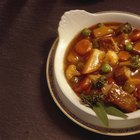
Easy Stews to Freeze
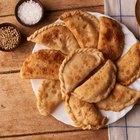
Can You Freeze Michigan Pasties?

List of French Pastries

Baking Quiche the Day Before the Party

Can You Freeze Osso Bucco?

What Is Docking Used for in Baking?

Can I Prepare Baked Brie Ahead of Time?

Can I Freeze Unbaked Biscuits?
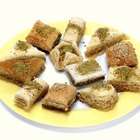
Can You Refreeze Phyllo Dough With ...
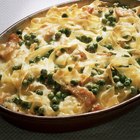
How Long to Bake a Pre-Cooked Frozen ...

How to Freeze Chicken Pot Pie

How to Freeze Sausage Biscuits

How to Fill Manicotti Shells

Can Strudel Be Frozen Before Baking?

The Best Way to Freeze Sausage Balls

How to Make Cannolis by Baking

How to Cook Fresh Perogies on the Stove

How to Make Frozen Breakfast Burritos
References
- On Cooking: A Textbook of Culinary Fundamentals; Sarah Labensky, et al.
- BBC Food: Classic Cornish Pasty
- Michigan Technological University Humanities Department: History of the Pasty
Writer Bio
Fred Decker is a trained chef and prolific freelance writer. In previous careers, he sold insurance and mutual funds, and was a longtime retailer. He was educated at Memorial University of Newfoundland and the Northern Alberta Institute of Technology. His articles have appeared on numerous home and garden sites including GoneOutdoors, TheNest and eHow.
Photo Credits
Hemera Technologies/Photos.com/Getty Images